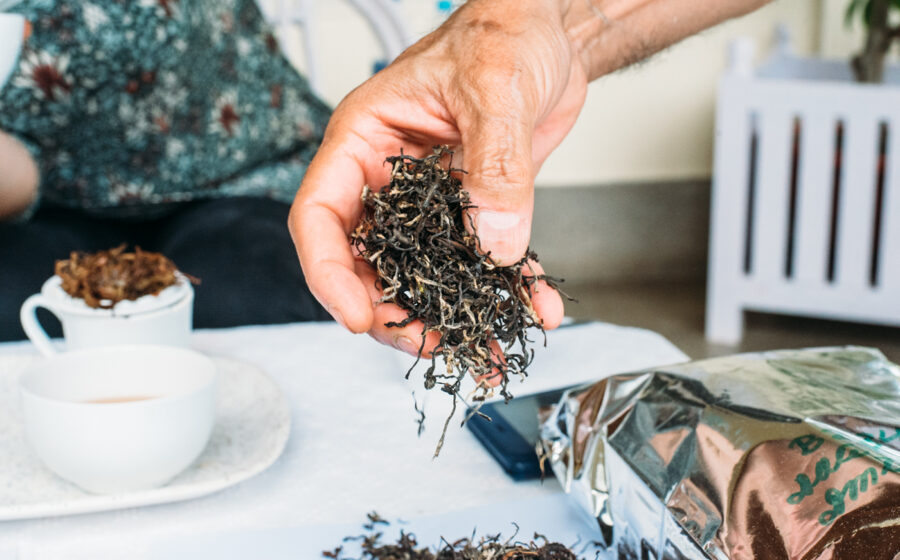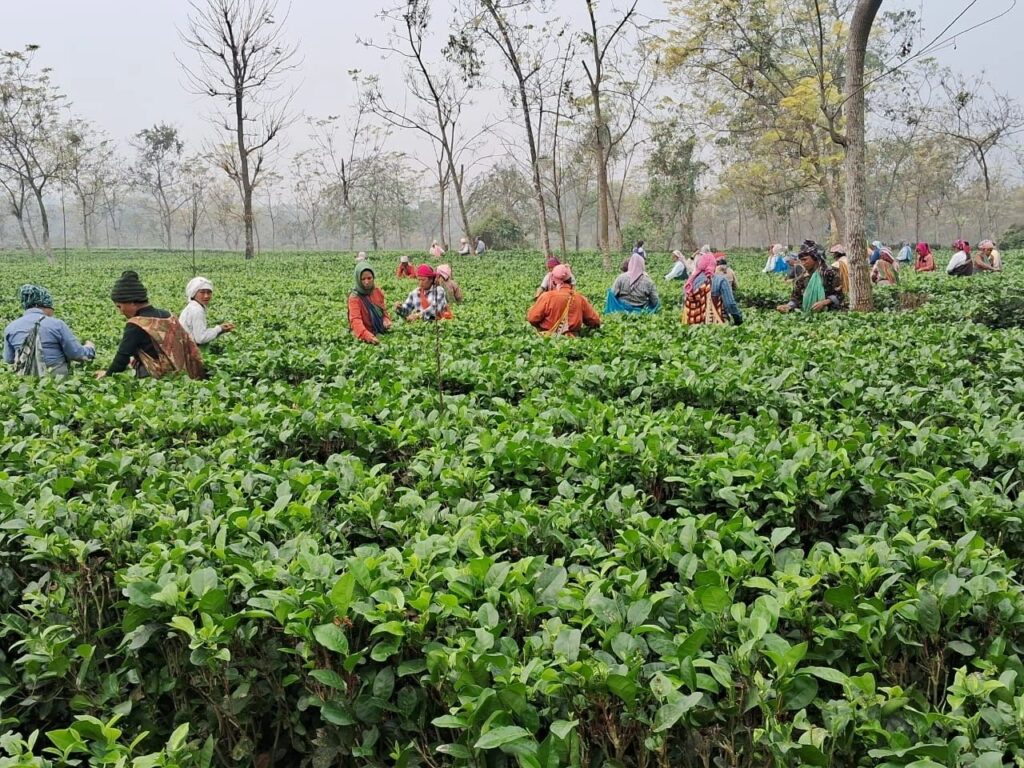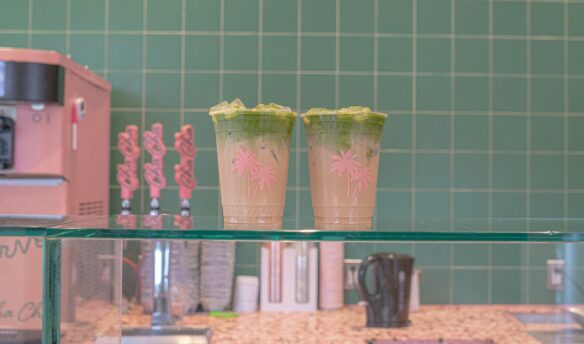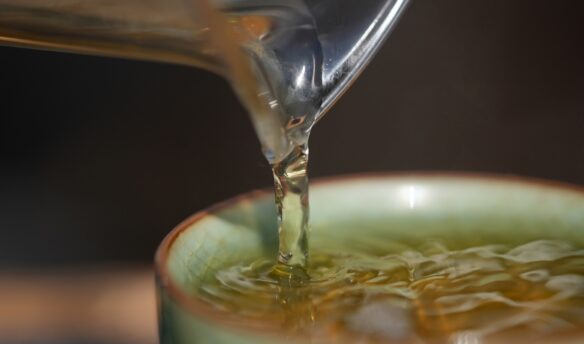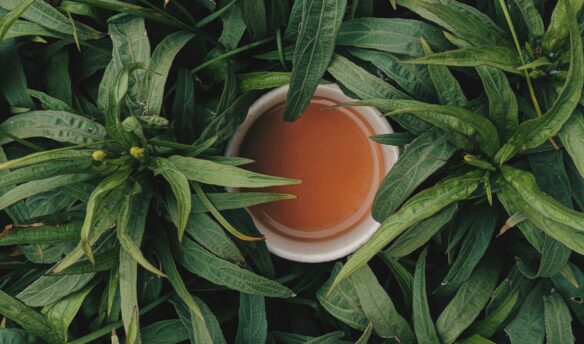When techie-turned-planter Rishi Saria acquired Darjeeling’s Rohini and Gopaldhara tea estates in 2004, one of the first things he did was set up an irrigation system. Saria’s decision was prompted by the substandard soil at Rohini, but proved wise given the climate challenges that the northeastern Indian hill district—famed for producing the so-called “Champagne of teas”—would face in the subsequent decades.
To flourish, tea bushes need moderate sunlight and light rain showers throughout the year. But over the past decade, Darjeeling has seen record-breaking summer heat, heavy rains and landslides during monsoons, and long dry spells in the autumn and winter. To counter these unusual weather patterns, tea gardens like Saria’s Rohini and Gopaldhara have resorted to irrigation.
“It was unnecessary in Darjeeling even two decades ago, but now we are watering the plants to prevent them from getting too stressed during the first flush [spring harvest],” says Saria. Without any irrigation during the drought-prone winters, the first-flush crop turns banji, meaning the tea bush produces overgrown leaves that have little to no flavor.
While some tea gardens are served by natural water bodies running through their estates, those that don’t have had to additionally invest in rainwater harvesting. “It is becoming a necessity now because mountain streams tend to dry out in the winter,” says Anshuman Kanoria, owner of the Goomtee tea estate.
Drought-Resistant Clones
In the face of these challenges, some estates are experimenting with climate-resistant tea clones. Developed by India’s oldest and largest tea research institute, the Tocklai Tea Research Association, these clones are drought-tolerant and have high yield potential. But planters say they do not have the full spectrum of flavors and aromas of tea produced by the Camellia sinensis plant.
A native of southeastern China, the China bush, as this small-leafed tea bush is popularly called by Darjeeling planters, was first brought to India and sown by British planters in Darjeeling in the mid-1800s. It thrived in the hill district’s cool climate and soil, and still makes up the bulk of its tea crop today.

The Camellia sinensis plant can produce green, black, white and oolong teas, but in Darjeeling, the British used it to produce black teas, as the region’s terroir lent the spring and summer harvests, or flushes, a unique bouquet of flavors and aromas. Post-independence, India’s estate owners continued to favor black tea, given its demand among Japanese and European buyers.
The drought-resistant tea clones developed by Tocklai are typically hybrids of tea bushes grown in Assam. The northeastern Indian state produces black tea from a variant of the Camellia sinensis plant, and yields a beverage with much stronger flavors than the more delicate Darjeeling teas. Even when vegetatively propagated from the China bush or hybrids of the Assam and China bushes, tea clones lack the unique flavor profile of Darjeeling tea.
“What defines Darjeeling tea is the muscatel flavor produced by the China bush,” Kanoria says. “A clonal bush has a very typical taste profile and certainly won’t produce a muscatel. So if everything in Darjeeling becomes clonal, that distinct muscatel flavor will be lost.”
At Okayti tea estate, garden manager Pankaj Choubey has recently planted 30–35 hectares of the 230-hectare garden with a drought-resistant tea clone. But he too believes that the China bush has an advantage: It can develop deep taproots that extend 6–10 feet underground to access water and nutrients, which is necessary for the health of the plant. The roots of most tea clones don’t go beyond 2–3.5 feet deep.
The problem is that many of Darjeeling’s China bushes are mature, and therefore struggle to withstand extreme weather conditions. “Tea is a perennial crop but droughts, floods, and pest diseases mean plants get weaker over time, and how long can the same bush keep giving you yields?” Saria observes.
At Rohini, Saria has dedicated a few hectares to a clonal variant that flushes earlier than the China bush. This allows him to get a first-flush crop as early as mid-January, two months before the harvest sets in for other estates. It also allows him to take advantage of the cooler days that are ideal for the first flush. But rather than depending on clones as a climate-mitigation strategy, Saria is also planting seeds of the China bush in the Gopaldhara estate’s vacant areas.
“The British planters did not make optimum use of space, planting only 8,000–10,000 bushes per hectare,” he points out. “Now when replanting, we are planting close to 20,000–22,000 bushes per hectare.” By the end of this year, he plans to cover about 7–8 hectares with China bush seedlings, which he hopes will replenish his garden in the next five to seven years.
Going Organic (and Low-Carbon)
The other change that bodes well for Darjeeling’s estates is the shift to organic cultivation. Data from the Darjeeling Tea Association shows that, as of 2021, 50 of the 74 estates that were operational at the time had gone organic. For some, the change came early, after Germany, one of Darjeeling tea’s biggest importers, rejected an order of teas citing high pesticide residue levels in 1995.
At the Okayti estate, Choubey began implementing organic practices as early as the 2003–04 season. He gradually pared back the use of chemical fertilizers in favor of organic manure, like cow dung, and reduced the use of pesticides before transitioning into a fully organic garden in 2009. “By easing into it, we ensured that our plants didn’t go into shock and could acclimate to organic inputs over time,” Choubey says.
Over the years, he has seen an improvement in the garden’s soil quality and the health of its plants. “Because of higher-than-usual temperatures, we are seeing a lot more pest attacks, but plants in organic gardens like ours are able to resist these attacks better,” Choubey explains. “Organic gardens also support small predators that prey on pests, like tea mosquito bugs and looper caterpillars. In a non-organic garden, pesticides kill the predators as well.”
Climate change is also forcing estate owners to rethink workers’ living conditions. When Kanoria bought Goomtee in 2021, one of the first things he did was to provide cooking gas connections at workers’ homes. That freed workers from their dependence on firewood and the health hazards associated with it. Since workers collected firewood by cutting down trees from forest patches inside the estate, the move also helped conserve the biodiversity of the tea garden. Other tea estates have similarly switched to non-polluting sources of fuel for their factories.
However, adopting climate-mitigation strategies is increasingly becoming a tough task for estates already running at losses. Kanoria estimates that “most Darjeeling gardens are losing almost Rs 200 ($2.3) per kilogram of tea, which means each garden is losing a few crores [more than $100,000] per year.”
The industry is getting by on owners, especially those with deeper pockets, absorbing these losses, he warns. For some time now, estate owners have sought government interventions in the form of subsidies and cash injections, but have been left empty-handed.
Are Innovations the Way Forward?
In the absence of government support, some estates are making a last-ditch effort to increase revenue through new product offerings. Traditionally, Darjeeling’s tea gardens focused on orthodox (whole-leaf) black teas, with first- and second-flush teas fetching premium prices. “A decent Darjeeling cup can fetch Rs 3,000-5,000 ($34–54) per kilo while a high-end cup can go up to Rs 10,000-12,000 ($115–138),” says Saria. But with export markets shrinking and climate change affecting the delicate flavors of first- and second-flush teas, these premiums are becoming uncertain.
At Selim Hill tea estate, third-generation planter Sparsh Agarwal is innovating with long-neglected monsoon and autumn flushes, which constitute nearly 70% of a garden’s yearly produce but currently only go into low-priced blends. He double-roasts the mahogany-colored monsoon flush to give it a smoky flavor, while the autumn flush is processed to emphasize its “floral and fragrant [notes] with hints of jasmine.” Agarwal prices these teas to appeal to Indian consumers, many of whom find premium Darjeeling teas unaffordable.
Saria has taken a different route, transitioning parts of Rohini and Gopaldhara to produce green, white, and oolong teas. Gopaldhara’s Emerald Darjeeling Green Tea is made from the autumn flush of Yabukita bushes brought over from Japan, while the Umami White Oolong is made from clones of the same bushes. Saria has also upgraded the technology used to process tea in his factories.
With its delicate flavors, Darjeeling tea needs equipment that is gentler than the cumbersome British rollers (machines used to press the tea leaves to break their cell walls and release juices crucial for developing flavor, which continue to be used in Darjeeling), he says. “Instead of the 36- to 48-inch rollers used by most estates, we use smaller machines that roll [the leaves] more delicately. We’ve also designed our oxidization machines such that leaves don’t break easily, which would otherwise lead to loss of aroma and a harsher flavor.”
With climate change altering Darjeeling’s tea gardens and testing the celebrated qualities of its tea, such innovations could become a crucial mitigation strategy for years to come.



